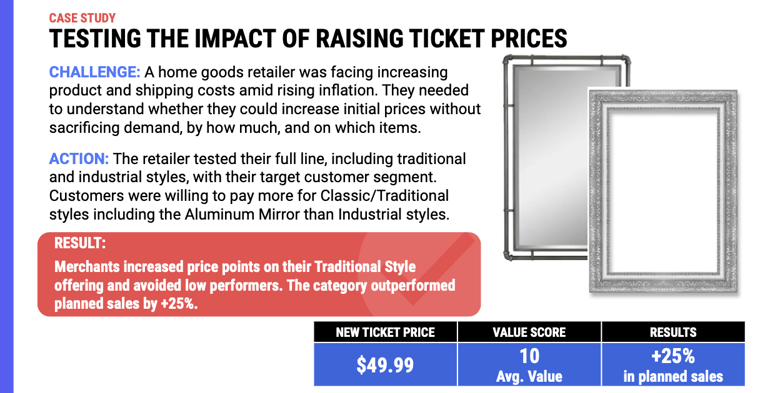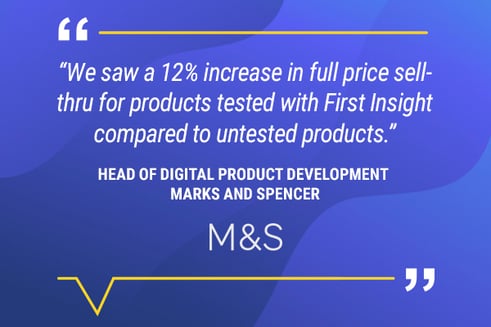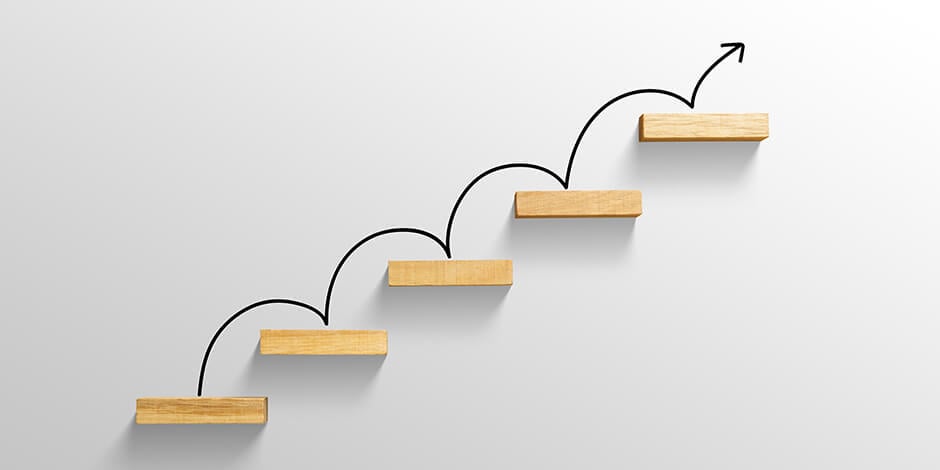Today's businesses face an unprecedented onslaught of supply chain disruptions, inventory inconsistencies, and economic uncertainty. To survive this era of near constant indecision, companies must be able to quickly adapt and pivot to avoid being in the red. This may mean price increases, but how will consumers react? It's not uncommon to worry that customers will go elsewhere, but it doesn’t have to be that way if planned and executed properly.
How to Implement Price Increases Successfully
1. Know Your Customers
While it may seem like a no-brainer, to craft the best experiences, you must know what your customers want and how they will react to changes in their buying experience. By understanding your customer’s journey, you can optimize the path to purchase. You need to learn more about your consumers' sentiments to cover all aspects of your business, including in-store and online experience, advertising messaging, order fulfillment, product offerings, promotions, and returns. Price is an important facet of the buyer's experience, but it's not the only one. Delighting the customer on non-price aspects can change a price increase from a show-stopper into a non-issue.
Voice of the Customer tools are a great way to gather viewpoints and valuable feedback from target audiences. Your customer's journey is not linear; it’s a circuitous path. You can't just focus on one aspect of the buying experience, but rather need to consider how your customers will interact with your brand across all touchpoints.
2. Price Right
If you need to raise prices, be sure that the increase is reasonable given your customers' willingness and ability to pay. Price optimization software, especially solutions that use voice of customer data, can provide additional insight into different pricing thresholds for various buyer personas. This information could help you determine what kind of gradual price increases would be feasible and palatable across different channels, segments, and product categories.
Forward-thinking retailers are turning to predictive software to understand optimal price points and promotional/markdown strategies before their products hit the marketplace. Not only are these tools more effective, quicker, and less expensive than traditional methods, but they can also provide recommendations for value-add features backed by cost-benefit analysis and driven by AI.
 3. Justify Price Increases by Providing Additional Value
3. Justify Price Increases by Providing Additional Value
When prices for so many things are skyrocketing, it is easy for a customer to assume you have raised your prices simply to make more money or maintain your margins. You need to understand what a price increase will mean for your business in order to communicate it adequately. While price is the most important factor in a customer’s decision, other incentives can influence that choice.
Loyalty
VIP or loyalty programs are an excellent way to both attract and retain customers. By offering extras based on amount and frequency of spending, this type of strategy offsets price increases while also providing a great experience—and one that can be customized for different demographics as your business grows.
Price vs. Quality
When it comes down to it, maximizing price is all about developing great products for the right customers. Our consumer research on price and quality shows time and time again how these are the top two factors driving purchase decisions. Creating valuable products can give retailers the versatility they need when pulling the pricing lever. Using a customer-centric approach will help you create winning products almost every time.

Build Brand Equity
When it comes to building a strong brand, it's important to know that trust and reputation take time. Brands that prioritize building brand equity can increase sales, improve customer retention, and drive growth. According to a Salsify consumer report, 90% of consumers are more willing to pay more for something if it's from a brand they trust. Retailers must understand their brand perception when considering increasing prices.
InsightSUITE helps brands make the right decisions by pairing voice of customer data with predictive analytics. Using quick, actionable insights allows businesses to increase success rate of new offerings through a pre-approval of target audiences, thus driving profitability, brand equity, and customer loyalty.
4. Bundle Offerings to Camouflage Price Increases
To soften the blow of price increases, offer new bundles of products or services. Consumers will be less likely to feel the impact of price increases if items can only be purchased as a set rather than if they are sold individually.
For instance, if product A and B are typically sold separately but the price for B has increased due to production costs, a brand can bundle those related products together. Consumers may be more inclined to choose a combination of offerings over individual products.
So, ask yourself, how might you combine your products or services and sell them as a package for greater profit? If you can’t bundle your products, consider offering free shipping, free returns, or a discount for purchasing multiple items. This will help offset the impact of price increases on consumers and may even increase sales. These are the types of offerings the world's top retailers are testing with voice of customer software like First Insight to stay one step ahead of competitors.
5. Give Consumers Options
If you must raise the price of a product or service, offering consumers a "lite" version will help to capture some of the demand that would otherwise be left unsatisfied by your new higher prices. And while the lite version might not generate as much revenue as your standard offering, it will still provide a significant boost to your bottom line.
Businesses may offer price tiers, as commonly used in good/better/best models. This gives customers the option to choose a plan that offers only certain services—as opposed to paying for more than they need or desire —while allowing businesses greater flexibility when choosing how much their offerings will cost. This is especially useful when you want to offer a low-cost or introductory plan that entices new customers into the fold, but you also need to maintain a high-end option for those who have more specific needs.
How we can help.
A price increase is an essential part of running a profitable business, but it can be tough to implement. There are both tremendous opportunities and lofty risks involved when pulling the price lever. For some companies, they have one chance to get it right—if they don't announce the change in advance or they handle it poorly, customers can revolt and never come back. By putting together a well-planned and tactfully executed strategy for informing customers about price increases, you will see your sales increase and your business flourish.
When you're planning to make changes to your pricing strategy, give your customers the best experience possible with First Insight's predictive analytics platform. First Insight helps companies forecast demand for their products and accurately predict how consumers will respond before they make risky decisions.
By using predictive analytics and voice-of-customer software to optimize pricing, companies are better equipped to keep pace with consumers’ fast-changing needs, preferences, and willingness to pay. First Insight helps brands and retailers optimize their pricing across all channels to improve sales and consumer satisfaction.
When you're ready to raise prices, do it strategically with First Insight.
















